iHarmony: A Look at the Music Theory App for iOS
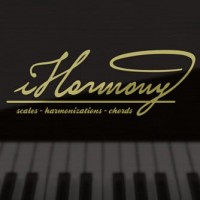 iHarmony is an app described by its creator as “a fully complete collection of scales, chords & harmonizations…”
iHarmony is an app described by its creator as “a fully complete collection of scales, chords & harmonizations…”
The harmonization part of the description describes what is actually a list of chord qualities for every note in a given mode (i.e.: Maj7, -7, -7, Maj7, Dom7, -7 & -7(b5) for the Major modes), which is quite handy.
While I wouldn’t call iHarmony a fully complete app, it is a great reference for all things in the Major, minor, melodic minor and harmonic minor world of tonality. It also includes pentatonic, BeBop, common altered scales and a few “folkloristic” scales like Neopolitan Major, and others.
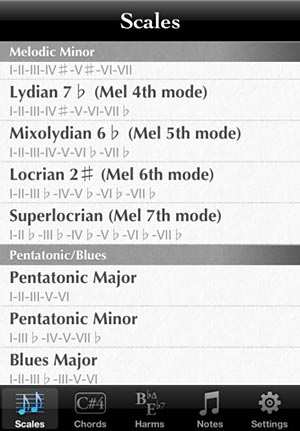 I think that this app is thorough enough to be quite handy to both student and professional musicians. So if you can’t recall the third mode of Harmonic minor, as an example, being able to check it quickly is going to save time and hassle, which is always good.
I think that this app is thorough enough to be quite handy to both student and professional musicians. So if you can’t recall the third mode of Harmonic minor, as an example, being able to check it quickly is going to save time and hassle, which is always good.
I especially like the inclusion of his “harmonizations” as that was how I first began to memorize my modes and actually understand ways in which I could apply them. It’s fantastic for understanding the relationships of scales and arpeggios from places other than the root within your given tonality.
In addition, a tap on any scale or chord will result in a midi sounding arppegiation of that scale or chord (it sounds good, though).
You can also choose between Anglo-Saxon, Italian, German and French (I imagine that you will stick to Anglo-Saxon, although choosing Italian is good for working on your Solfege!)
Truly, at 99 cents, I don’t know why any student of music wouldn’t opt to check this app out. It may not be the prettiest app on earth (it’s all text.. zero graphics), it is just chocked full of great information.
iHarmony is universal app, designed for iPhone, iPod Touch and iPad and requires iOS 4.0 or later. It is available on the App Store for $0.99.
Readers, have tried iHarmony, or is there another app of this kind that you prefer? Let us know in the comments below!

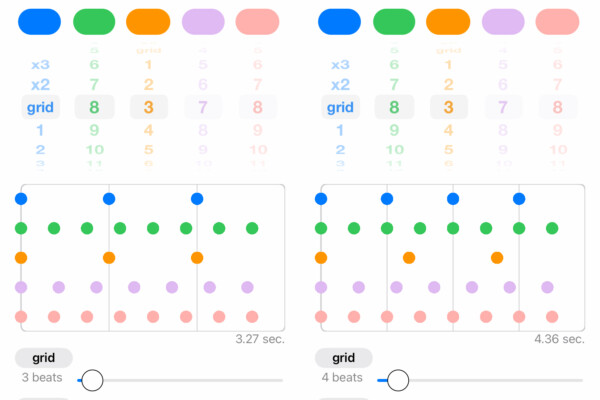
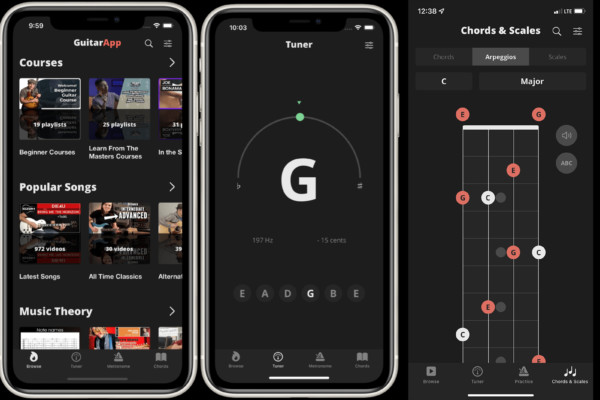
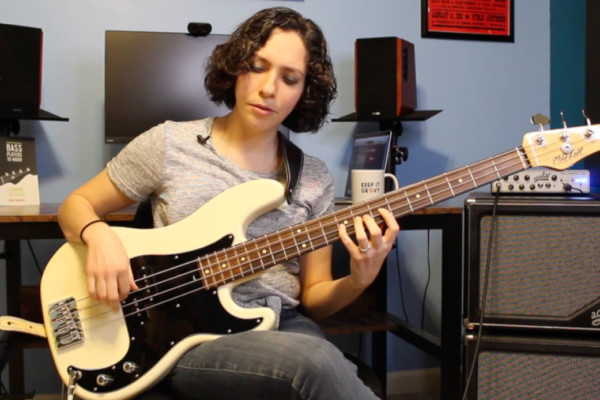
there’s a great sight reading app called music tutor, and it’s free.
The “lite” version is free but the full version is .99 cents as well. I’ll check it out, tho!
oh yeah, music tutor doesn’t cover ANY of the info in iHarmony, tho. It’s strictly a sight reading app with a quiz on notes of the staff. iHarmony is all about modes and chord qualities. Completely different apps
yeah, well i said sight reading in my original comment, just thought it was a pretty cool app.
Any music theory app that puts the accidental AFTER the affected degree loses its credibility immediately. “Lydian 7 b” instead of “Lydian b7?” “1 2 3 4 # 5 6 7 b” instead of “1 2 3 #4 5 6 b7?”
Yeah, me too. I was wondering if that was something inherent to a system taught in Italy (The developer of the app is Italian)… not sure but it threw me off, too
I didn’t think of it that way. I’m so Ameri-centric! oops!
It’s just our way for everyday speaking I think (not italian but french, very similar and latin langage). I usually say “lydien septième bémol” for that lydian b7 for instance, a b5 is quinte bémol etc…. we place the alteration after. Just an ethno-linguistic issue I think ;-))
Another example: you say “dominant seven” and I say in my language”septième de dominante”…